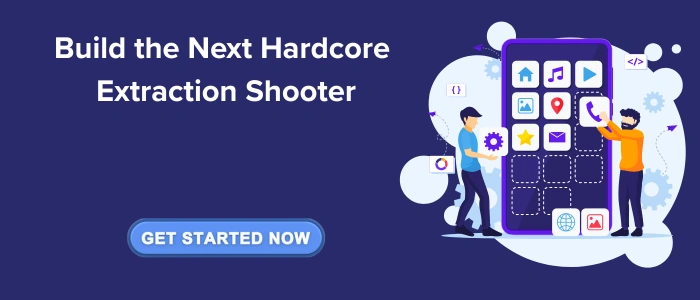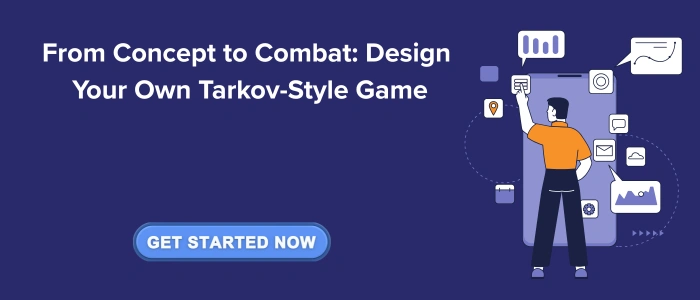In the gaming world, Escape from Tarkov has carved a unique niche for itself. With its gripping realism, high-stakes gameplay, and a blend of survival and first-person shooter mechanics, it stands out in the crowded FPS genre. For developers and enthusiasts looking to create something similar, the challenge lies in capturing the essence of what makes Tarkov so compelling. This guide explores the fundamental steps and strategies for Escape from Tarkov clone development, offering insights into design, mechanics, engine choices, monetization, and more.
Understanding the Genre: What Is an Extraction Shooter?
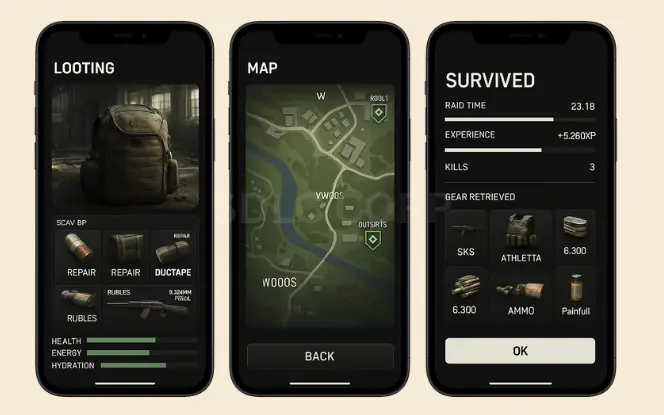
An extraction shooter, sometimes referred to as a looter shooter, is a hybrid genre that blends first-person combat with survival mechanics and persistent inventory systems. In such games, players infiltrate a map, collect loot, survive against AI or other players, and extract before dying.
Escape from Tarkov pushed this genre to new heights by emphasizing realism, detailed ballistics, and risk-reward mechanics. To develop a similar game, it’s critical to understand these genre-defining elements:
- Persistent character inventory
- Lethal, tactical combat
- Realistic looting and healing
- Complex gear systems
- Risk-heavy extraction dynamics
Explore: Develop a game like Free Fire
Choosing the Right Engine: Unity vs. Unreal
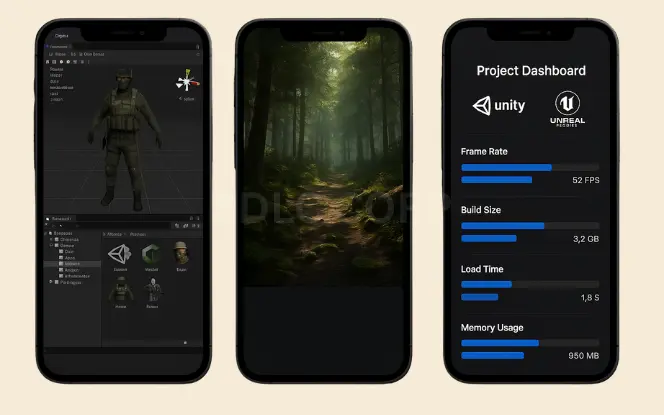
For a game of this complexity, your game engine needs to support advanced graphics, detailed physics, robust multiplayer networking, and asset management.
Unreal Engine is often the go-to for AAA-quality visuals and realistic physics. With its Blueprint system and C++ capabilities, it’s suitable for realistic survival shooter development.
Unity offers flexibility and a strong indie community. While it might require more third-party assets or plugins for comparable fidelity, it’s perfectly capable of supporting complex systems like those in Tarkov.
Factors to consider:
- Visual fidelity vs. performance
- Platform compatibility
- Team expertise
- Licensing and cost
Building Core Game Mechanics
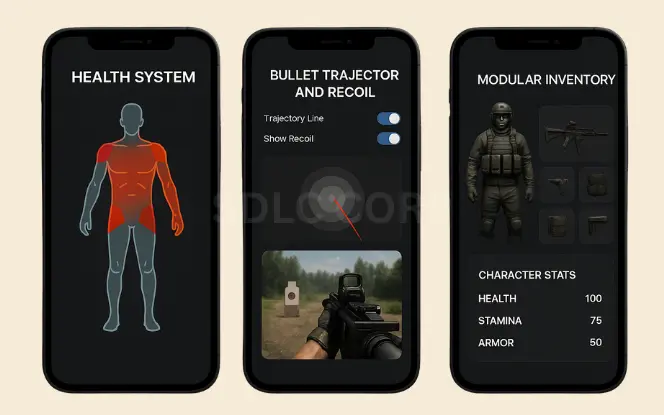
1. Combat and Ballistics
Tarkov’s ballistics system is grounded in realism—bullet velocity, penetration, and ricochets all matter. Your game should simulate:
- Projectile physics (drop, speed, trajectory)
- Hitboxes and limb-specific damage
- Armor and penetration values
Use real-world data where applicable, but always balance for gameplay.
2. Health and Damage System
Escape from Tarkov uses a complex health model that tracks damage per limb, bleeding, fractures, and hydration. Implementing a modular health system enhances immersion and decision-making.
3. Loot and Inventory
Inventory management is a game within the game. Players sort, combine, and Tetris-style organize gear and loot. Consider:
- Grid-based inventory system
- Item weight and volume
- Rarity tiers and item decay
4. Extraction and Progression
The extraction loop is central. Players enter a raid, collect loot, and must escape. Failure means losing everything. Features to include:
- Timed raids
- Dynamic AI enemies (scavs, bosses)
- Randomized loot spawns
- Secure containers for essential items
Read More: How to Develop a Game Like HuniePop
Multiplayer and Server Infrastructure
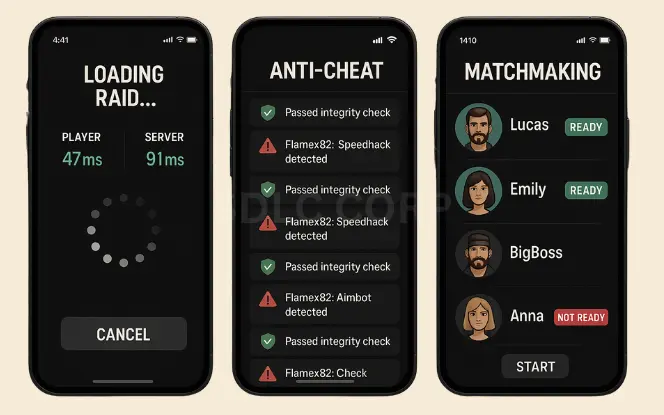
Multiplayer functionality is essential for any Escape from Tarkov-style game. Your backend must support:
- Real-time PvP combat
- AI-driven PvE elements
- Matchmaking and raid instances
- Anti-cheat mechanisms
Consider using dedicated servers with cloud scaling (e.g., AWS GameLift or PlayFab). Use authoritative servers to maintain game integrity.
Learn More: Develop a game like the Snake Game
Map Design and Level Construction
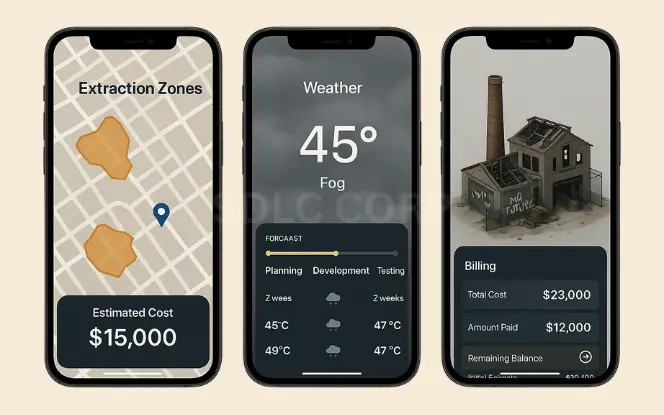
Escape from Tarkov features detailed, semi-open world maps that reward exploration. Effective level design includes:
- Varied environments (urban, forest, industrial)
- High-risk/high-reward zones
- Dynamic weather and lighting
- Environmental storytelling (graffiti, clutter, sounds)
Design for replayability—include multiple entry/exit points, randomized AI patrols, and loot placements.
Also Read: How to Develop a Game like Risk
Audio and Visual Realism
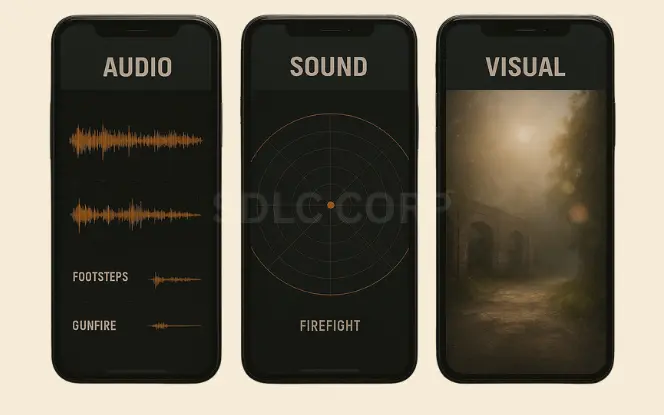
Realistic gun sounds, ambient noises, and visual cues are crucial. Sound design affects player strategy, as footsteps or gunfire direction can change an encounter.
Invest in:
- Foley recording for gear, weapons, and environments
- 3D positional audio
- High-resolution textures and physically-based rendering (PBR)
Character Progression and Economy
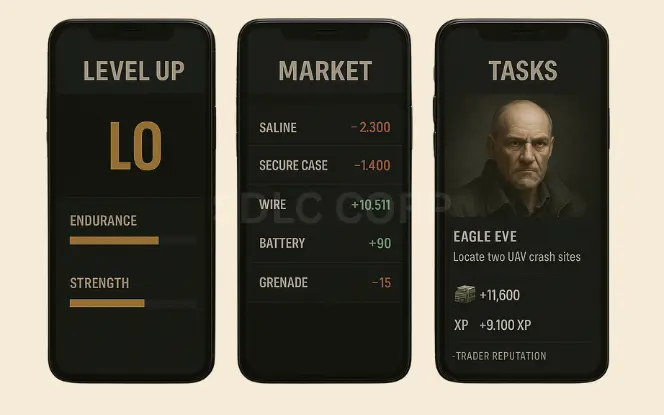
Tarkov blends MMO-style character progression with in-game trading. Your game should have:
- Skill leveling (e.g., strength, stamina, reloading speed)
- Flea market or trading system
- Currency (multiple tiers, e.g., rubles, dollars)
- Quests from NPC factions
Balancing the economy is vital. Avoid pay-to-win elements to maintain credibility.
AI Design for Scavs and Bosses
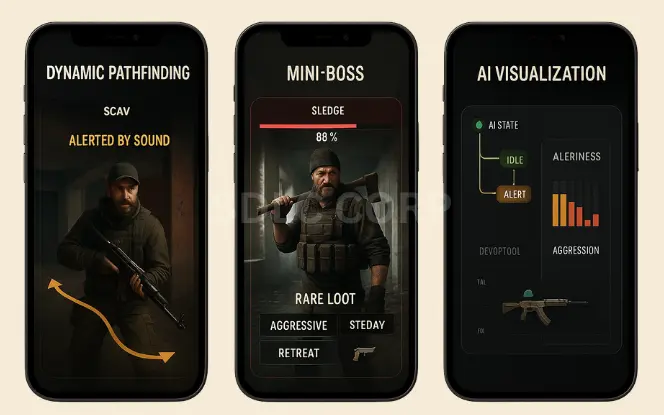
AI enemies must feel unpredictable yet fair. AI should be:
- Reactive to sound and visual input
- Capable of patrolling, flanking, and using cover
- Scalable in difficulty and behavior
Include boss-level enemies with special loot and behaviors to create tension and reward.
Also Read: How to Develop a Game like Minecraft
Monetization Models
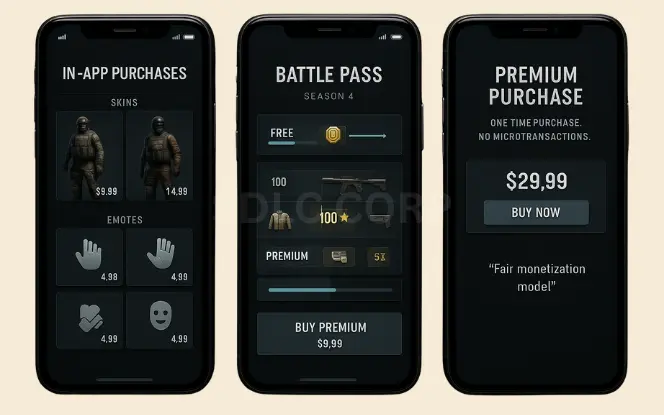
While Escape from Tarkov uses a buy-to-play model, you could consider:
- One-time purchase (with or without DLCs)
- Battle passes for cosmetics
- In-game currency bundles (non-essential)
- Optional premium accounts (for XP gain, stash size)
Be transparent and avoid gameplay-affecting purchases.
Community Engagement and Feedback
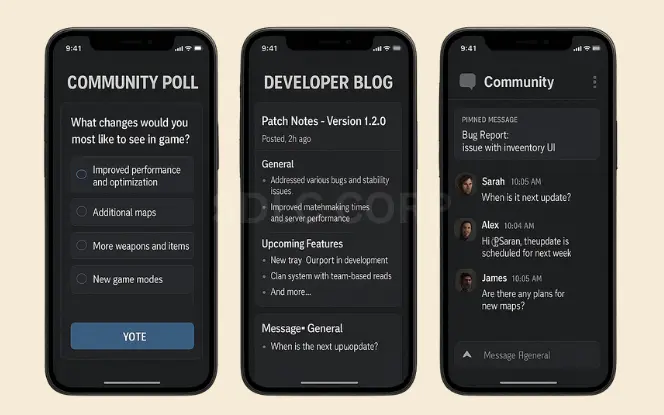
A strong community can make or break your game. Engage early via:
- Closed alpha and beta testing
- Discord servers and forums
- Developer diaries and updates
Iterate based on feedback, and communicate transparently about changes.
Conclusion
Escape from Tarkov clone development is an ambitious but rewarding endeavor. Success lies not in copying the original but in learning from it.
By integrating tactical depth, realism, and a compelling gameplay loop, your game can stand on its own while drawing from a beloved genre.
Ready to turn your game idea into reality? SDLC CORP specializes in game development and can help you bring your vision to life with professional-grade design, development, and deployment services.
FAQ's
What Kind of Game is Escape From Tarkov?
Escape from Tarkov is a hardcore, realistic first-person shooter (FPS) with RPG and survival elements. It belongs to a sub-genre called extraction shooters, where players loot gear, survive encounters, and extract safely from a map to retain their progress. The game is known for its brutal difficulty, realistic ballistics, tactical gameplay, and persistent inventory system.
What Does “Escape From Tarkov Clone Development” Mean?
It refers to the process of designing and building a video game that replicates or is inspired by the core mechanics, features, and gameplay loop of Escape from Tarkov. This includes realistic combat, looting, inventory management, and extraction-based progression.
Which Game Engine Should I Use to Create a Tarkov-style Game?
Both Unreal Engine and Unity are viable choices:
- Unreal Engine is ideal for high-fidelity graphics, realistic physics, and large multiplayer systems.
- Unity is better suited for flexible workflows, cross-platform deployment, and quicker iteration—great for indie developers.
The best engine depends on your team’s expertise, budget, and the scale of your project.
How Difficult Is It to Build a Realistic Survival Shooter Like Escape From Tarkov?
It is very complex and time-intensive. Developing realistic AI, physics, networking, inventory systems, and balancing player progression requires a skilled team across multiple disciplines: game design, art, programming, sound design, and QA. Small teams often take several years to reach even an alpha stage for such games.
Do I Need a Large Team to Build an Escape From Tarkov-style Game?
Not necessarily, but having a larger team accelerates development. Solo developers or small teams can start with a simplified prototype focusing on one or two mechanics, then gradually expand. Outsourcing specific tasks (e.g., 3D assets, sound design) is common in indie development.

